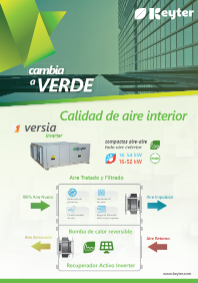Active-Passive Heat Recovery Ventilation
When ventilating spaces with human presence, it is essential to take into account the ventilation standards or needs that each room requires, depending on its characteristics. These standards are set out in standards and regulations such as RITE, in the case of Spain, or ASHRAE in America.
Based on this main idea, it can be stated that the evolution of ventilation will depend on three fundamental aspects:
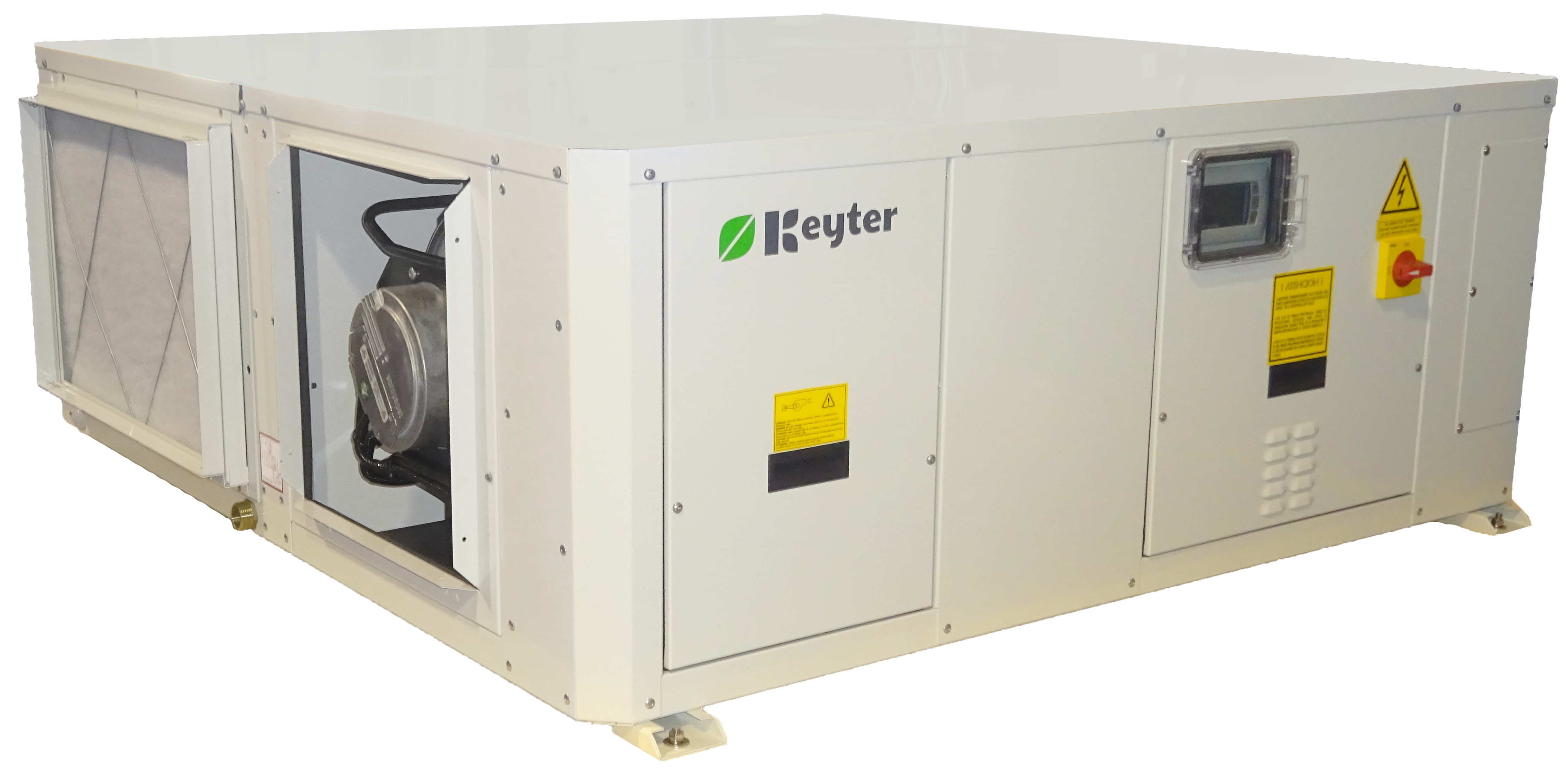
- Existing and future standards, determined by different regulations, will be overtaken by ventilation needs such as indoor environmental quality or the prevention of Building Related Illnesses (BRE).
- The installation must be energy efficient, it must not overload the building’s consumption.
- The system must be compatible with existing installations, seeking to achieve building renovations with ZERO IMPACT.
We will outline some of the ventilation strategies that can be considered below. Firstly, it would be possible to inject air-conditioned air. This would provide adequate ventilation and the correct air-conditioning temperature, but with a high energy consumption that would not comply with the requirements of any regulations

A more energy-efficient option would be to inject neutral air. However, this would not be the most suitable solution either, as although the energy consumption would be much better, the necessary thermal conditions would not be achieved.

The strategy normally used for intelligent air-conditioning within the parameters set by the standards is the injection of recovered air with a cross-flow recuperator.
We must be clear that this option is not valid on its own, we will have to air-condition the recovered air; that is to say, that the air that enters the room is in the correct thermal conditions. This is the job of the air conditioning system already in place in the room. The main disadvantage we find with this option is that we are using two different installations.
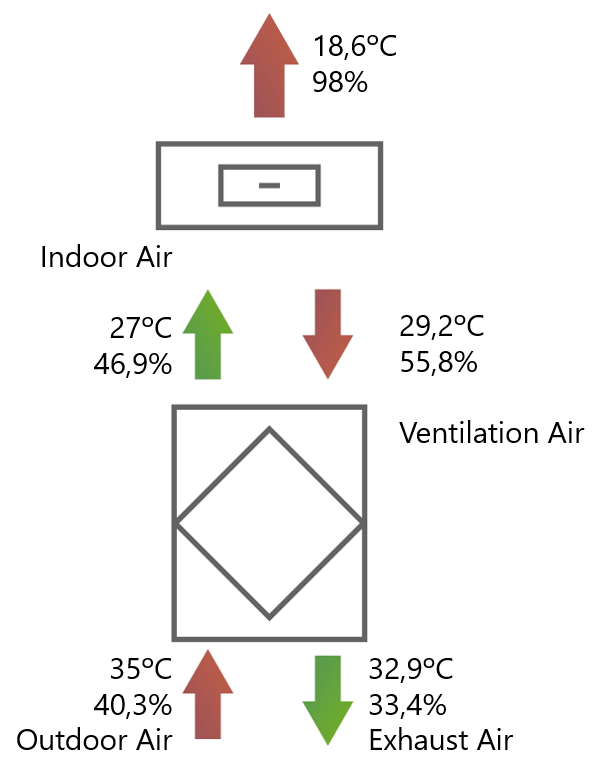
Another option we can consider is active recovery or refrigeration recovery. This system does not require a recuperator as such; rather, the equipment itself takes in return air and expels it, and injects the air it takes in from outside.
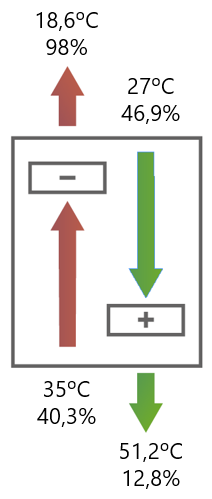
This technology is an option that works and meets the standards set out in the regulations. But we could improve it by combining it with passive recovery.
With the active-passive recovery (APR) we have a compact unit VERSIA with easy and unique installation, single casing and without extra ducts to those already installed for the air conditioning unit.
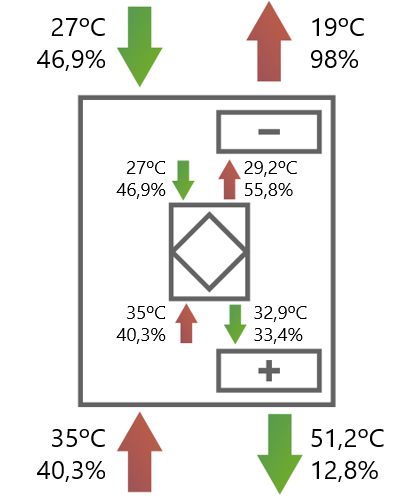
This installation would not affect the existing air conditioning system, in addition to having a very low consumption with a high cooling capacity. Therefore, what ventilation strategy do we propose?
Comparing all the options we have presented, we can state that the combination of active and passive heat recovery is the optimal solution for room ventilation.
You can find more information on active-passive recovery in our video:
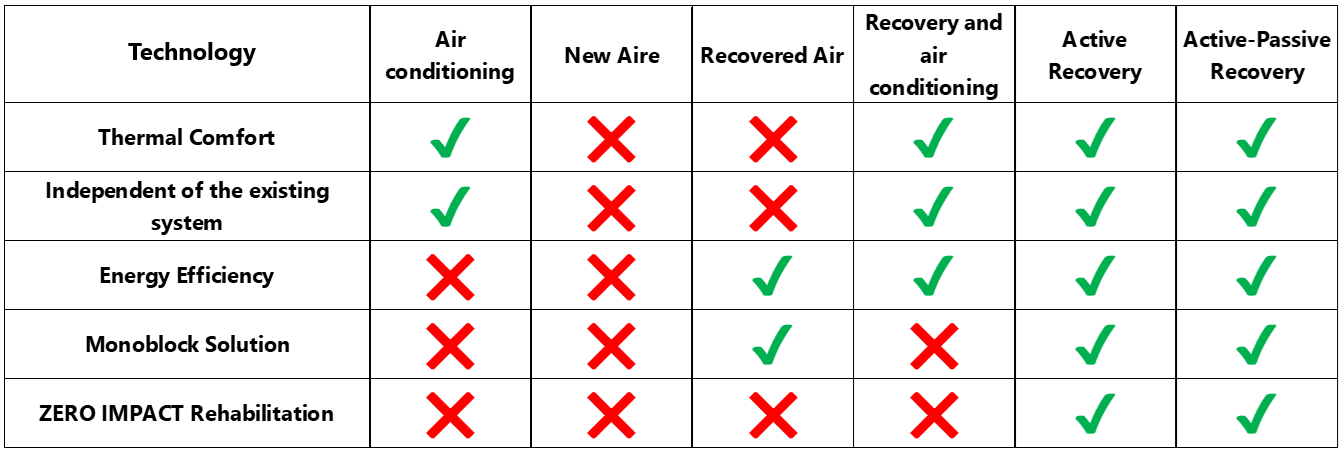
More articles
Interested in other (technical) knowledge articles? Keep yourself up to date and read them all


